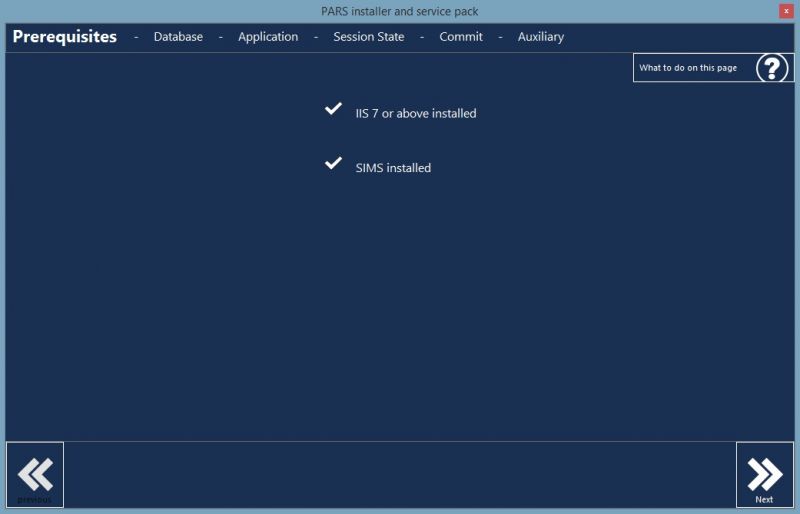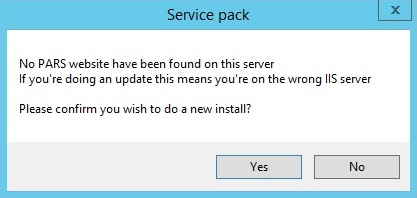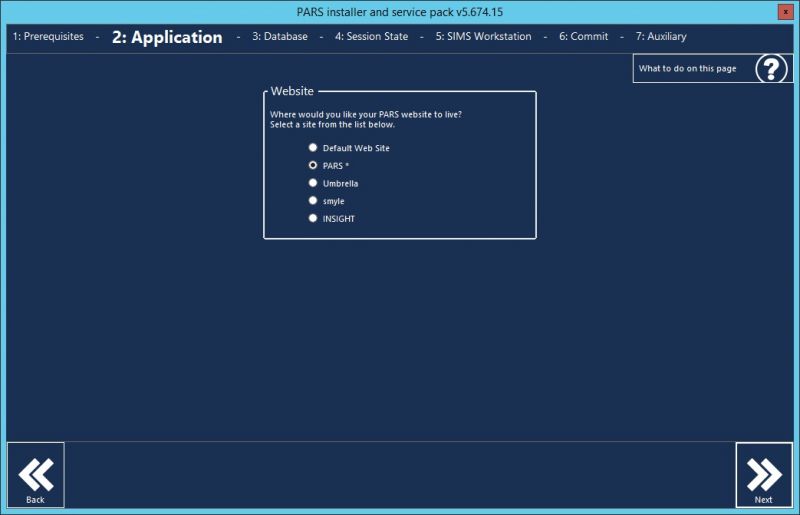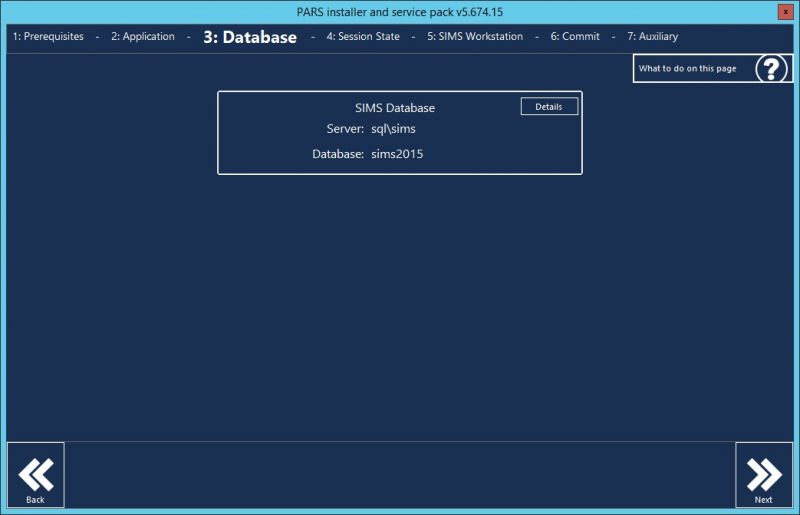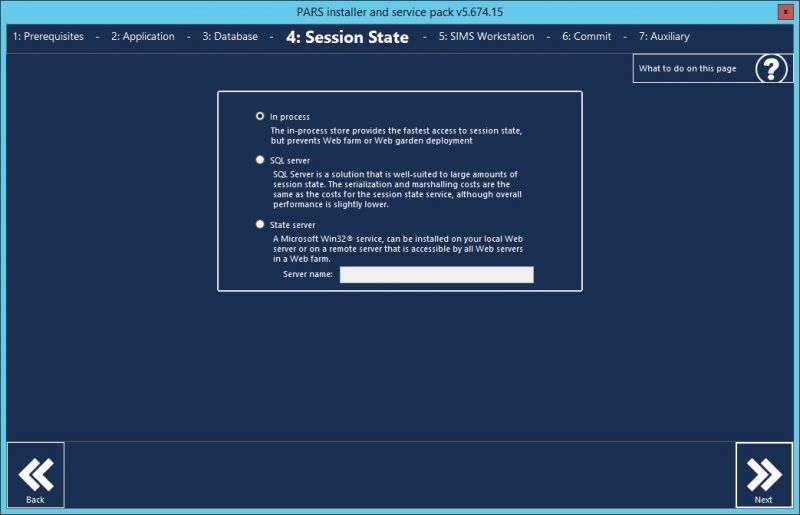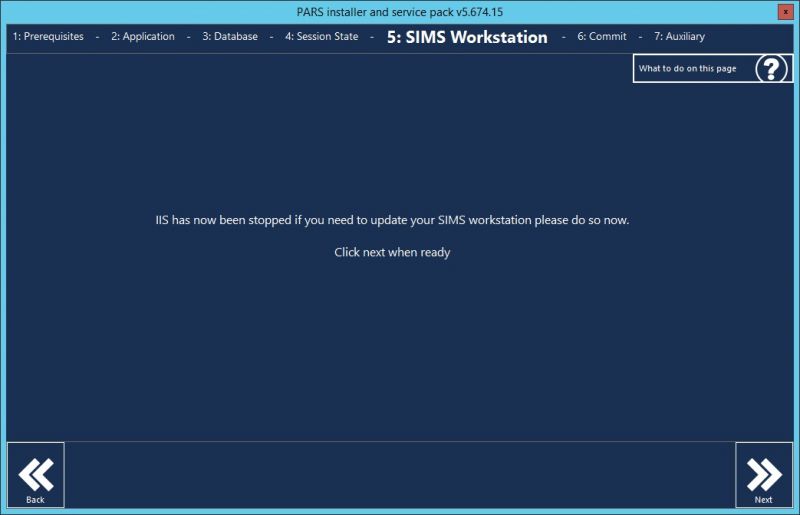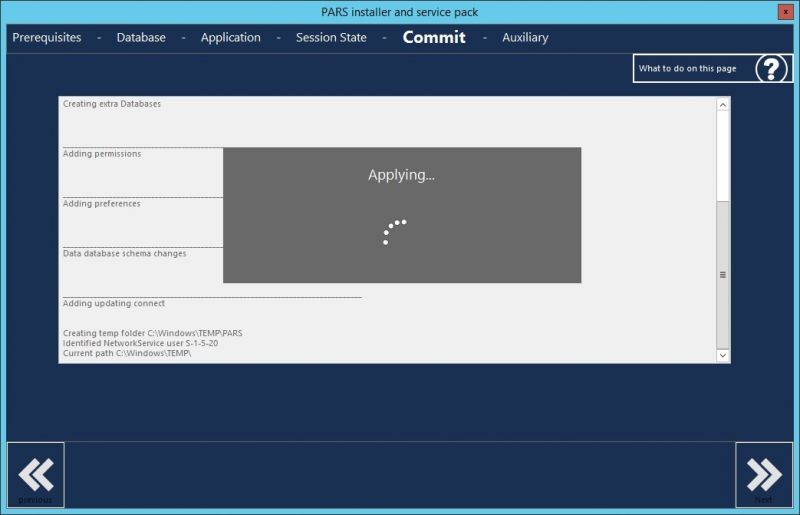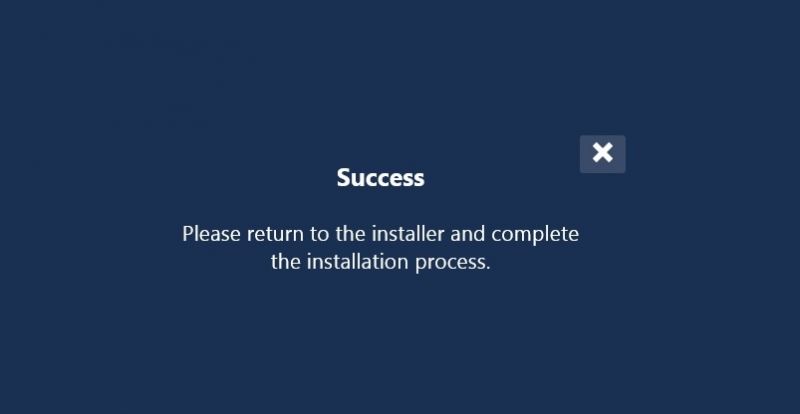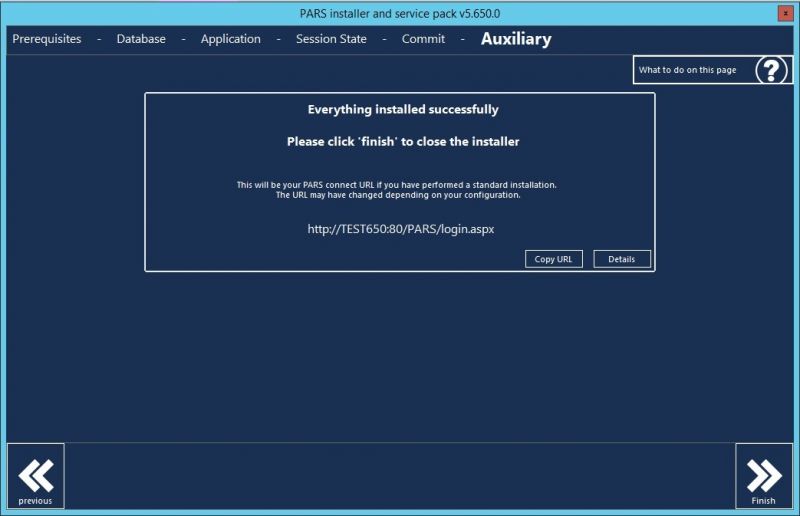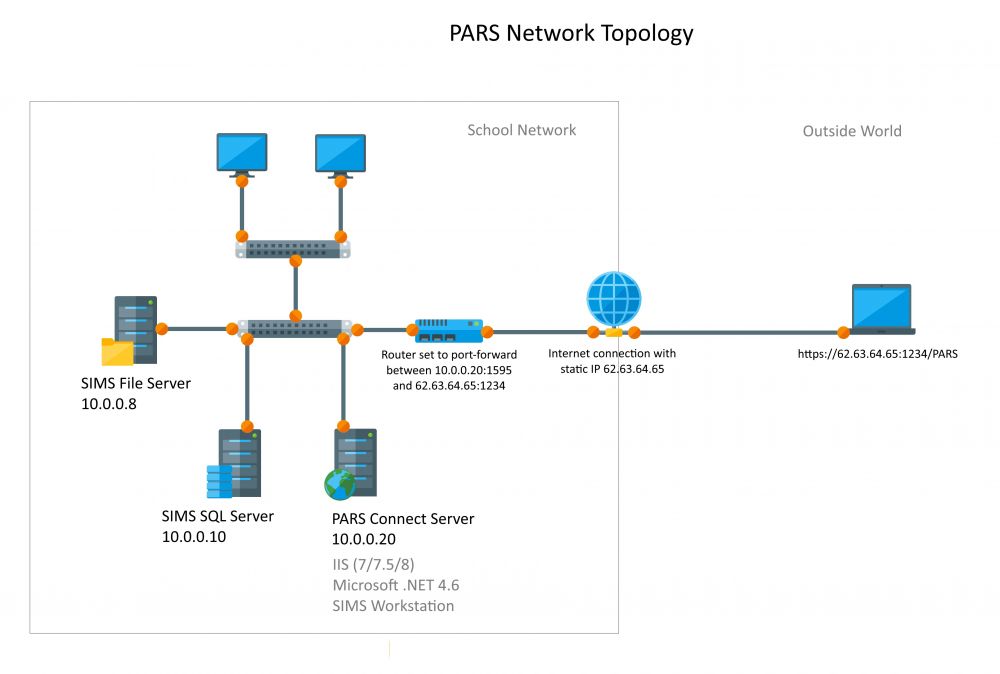Difference between revisions of "Service pack"
(→PINS) |
|||
| Line 160: | Line 160: | ||
<setting name="CAPTCHA" serializeAs="String"> | <setting name="CAPTCHA" serializeAs="String"> | ||
| − | |||
| − | |||
| − | |||
| − | |||
| − | |||
| − | |||
| − | |||
| − | |||
<value>On</value> | <value>On</value> | ||
</setting> | </setting> | ||
Revision as of 11:45, 20 July 2018
The PARS Service Pack is used to install PARS and to perform version updates. This must be performed on the IIS server that is hosting or is going to host PARS. Users will be kicked out of PARS when the Service Pack is run.
Contents
Prerequisites before installing PARS
Hardware Requirements
Minimum Spec
- 4 Cores
- 8 - 16gb Ram
- 64bit OS (2012 preferably)
- IIS7 or above
- 1000mb NIC
Recommended Spec
- 8 Cores
- 32gb Ram
- OS server 2012
- 1000mb NIC
Software Requirements
The server hosting PARS must have the following:
- Windows Server 2008 Web Edition (or above)
- IIS7 (or above)
- Microsoft.Net Framework 4.6.2
- SIMS Workstation Components
NOTE: It is important that on the IIS server the order of installation is Windows -> Webserver software -> .net software
NOTE: PARS is dependent on a valid SIMS.INI file and cannot function in the absence of or corrupted SIMS.INI file in the windows folder.
IIS7 / IIS7.5
Web Server
- Common HTTP Features
- Static Content
- Default Document
- HTTP Errors
- HTTP Redirection
- Application Development
- ASP .NET
- .Net Extensibility
- ASP
- ISAPI Extensions
- ISAPI Filters
- Security
- Windows Authentication
- Management Tools
- IIS Management Console
- IIS Management Scripts and Tools
- IIS 6 Management Compatibility
- IIS 6 Metabase Compatibility
- IIS 6 Metabase Compatibility
IIS8
- Add ASP.net 4.5
- All other options can be left as their default.
Downloading the Service Pack
Download the latest PARS Service Pack from our website, www.tascsoftware.co.uk. You will need to have your helpdesk login details available for this. If you have forgotten your login details, or have never had an account, you can contact us using our website contact page. Alternatively, you can call us on 01902 824281.
When you have logged into our website, you will see a list of available downloads. PARS Connect and PARS .Net updates are both contained in the PARS service pack.
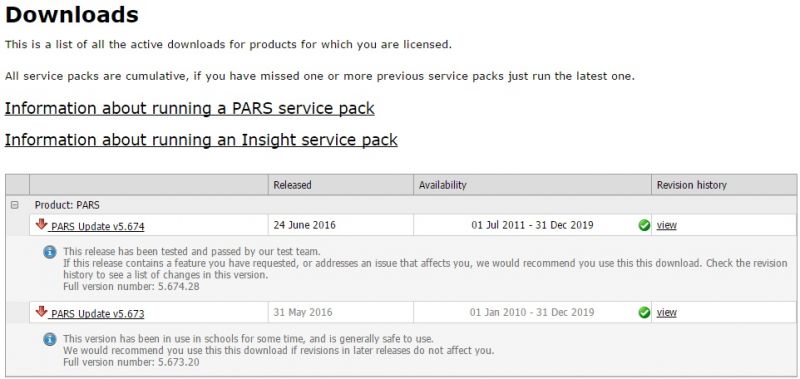
|
Installing or Updating (running the Service Pack)
Once you have downloaded the latest Service Pack, run it on the IIS server. A window will open - follow the steps below to install or update PARS Connect.
Prerequisites
This tab will check that you have the required prerequisites in order to install or update PARS. If any components are missing, install them then rerun the PARS Service Pack.
Application
This tab allows you to select the website where PARS will be installed.
Installation
You should see a message box asking whether you wish to perform a new install. If you do not see the window below, contact our Online Helpdesk.
You will see "Default Web Site" and "Create new website", as well as the names of any other websites hosted by this IIS server. We recommend installing PARS as a new website. However if you do not know where to install the files for the PARS website, you can use the Default Web Site instead.
Updating PARS
If you see a message box like the one below, please contact our Online Helpdesk.
You will see a list of websites here, one of which should have an asterisk (*) after its name and will already be selected. If you can see multiple sites with an asterisk after their names then PARS has been installed more than once.
You should then see a window like the one below:
Database
At this stage the Service Pack will check the connection to the SIMS database. If the Service Pack cannot find your SIMS database, you will need to find out why then resolve the issue before running the PARS Service Pack. Running SIMS on the server may provide some clues as to why the PARS Service Pack could not connect to the SIMS database.
Installation
If you are installing PARS you will be asked for your SQL System Administrator (sa) password.
Enter your SQL sa password then click "Connect".
Updating
If you are updating PARS for the first time since migrated your SIMS SQL server, you may be asked for your SQL SA password. If this is not the case and you are being asked to provide an SA password when updating PARS then do not proceed any further and contact our Online Helpdesk.
Session State
This tab gives options for handling the session state of logged in users. If you are unsure of which option you need to select, or do not know the pros and cons of each option, then you should choose In Process.
SIMS Workstation
This tab of the Service Pack will stop IIS. If you need to perform a SIMS update you must run the Service Pack up until this point - and not proceed any further - then leave the Service Pack open and perform the SIMS update. Once SIMS has been updated the Service Pack can be continued.
Commit
As long as there are no errors, you will not see this tab. The installer will skip past this tab and perform all of the steps for you.
A window will open explaining whether or not the Commit tab ran successfully. If everything was successful then the window will disappear after 5 seconds. Otherwise the window will stay open telling you what went wrong.
Auxiliary
If your window looks like the one below then the installation or update has completed successfully and you can click the "Finish" button to finalise it.
If you see the following image then the Service Pack thinks that the server you have used is not your main PARS IIS server. If this is correct, click "Finish".
If this server is your main PARS IIS server (perhaps because you have migrated your server) then select "Yes", then click "Finish".
Extras
CAPTCHA
If you wish you can set a CAPTCHA which will be required for users to log in to PARS Connect. To enable this, find the web.config file on the IIS server (by default it is found in c:\inetpub\wwwroot\pars) and open the file in Notepad. Find the lines of text below and make sure that "value" is set to "On".
<setting name="CAPTCHA" serializeAs="String"> <value>On</value> </setting>
Configuring External Route
If you want PARS to be accessible on machines outside of the school network, you will need to ensure that a route is configured from outside to the PARS Connect IIS server. Although the details will change according to the environment your PARS server operates in, the principle remains the same. Your school will have a static IP address that it presents to the Internet, and you will have to forward requests to this address, on the port chosen for PARS when installing, to the internal network address of the PARS server on the same port, for example:
Assuming your schools external IP address is 62.63.64.65, and your PARS server's internal network address is 10.0.0.20, and that PARS is installed to listen on TCP port 1595, the forwarding rule would be 62.63.64.65:1595 is to be forwarded to 62.63.64.65:1234.
This rule would normally be configured either at the school's main incoming router, or you may have to put in a change request to your LA to have this facility enabled - again, details will vary according to circumstance.
When you know the external address you will be using, you can either embed this in your school's main web site as a link, or distribute it as is.
As a final note, it is strongly suggested that you install and use an SSL certificate on the PARS server, and also that it is not a self-signed certificate, unless you will be also using the server as a root certificate authenticator.
Although not authoritative, the example below may help you to with this stage.
SSL certificate
To encrypt traffic between the server and client and to enable https for Insight, an SSL certificate will be required. This can be purchased in advance of installing Insight (the URL that will be used for Insight and the name of the server that Insight will be installed on will be required).
An SSL certificate is not required when installing Insight initially and can be acquired after installation.
To associate the certificate with the site, first follow the instructions from your certificate provider both to apply for and receive the certificate.
Once you have acquired an SSL certificate, the Insight traffic can be encrypted by following these steps:
- Open IIS Manager. Under the Sites folder, select the Insight site
- On the Actions panel, click the Bindings option in the Edit Site section
- A Site Bindings window will open. Click the Add button
- Another window will open to Add Site Bindings. Set the Type to https and the SSL certificate to your certificate. The port over which traffic is secured is usually 443
If port 443 is already in use, you can enter the host name of your Insight site so that port 443 can be shared. The host name is the Insight URL that is used outside of the school, without any page extensions or https prefix e.g. Insight.MySchool.co.uk
